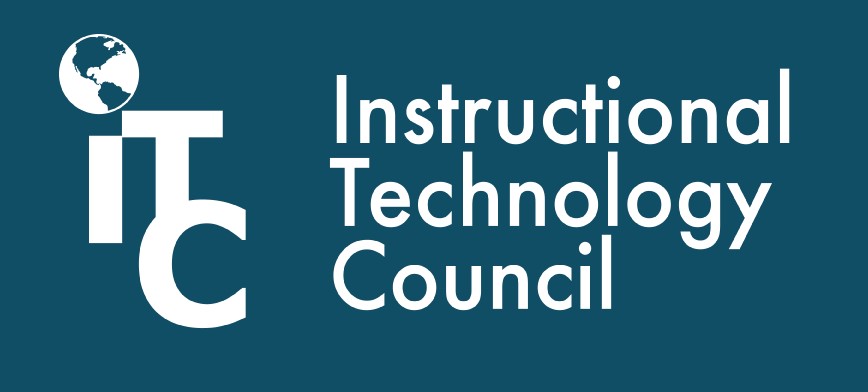Community colleges continue to adapt in the post-Covid era. Uncertainty remains as to whether we will have to close down again or not. According to the Centers for Disease Control and Prevention, there are potential storm clouds on the horizon and the risk of a 2023 winter Covid variant outbreak remains real.

Online education stepped up at the start of the pandemic and allowed our institutions to continue to function from March 2020 until this fall. Students were able to continue their studies and staff were able to continue to work. According to the National Digital Pulse survey: “The experience of learning remotely during the pandemic left students with a positive attitude toward online and hybrid courses.” In fact, the survey affirmed that 73% of responding students indicated they want to take some of their classes in a fully online format.
The survey also found that 53% of responding faculty want to continue teaching online classes. Overall, both of these findings represent an increase in interest in online learning post-pandemic.
This article is part of a biweekly series provided by the Instructional Technology Council, an affiliated council of the American Association of Community Colleges.
The trends outlined in the National Digital Pulse survey indicated a growth in student and faculty interest and consistent with those cited in the 2020 ITC National Survey of Community Colleges Report stated: “For the past sixteen years, online enrollments have been the basis for the overall growth in college enrollments nationally. This year’s reported increase in online enrollments confirms that campuses will need to remain focused on increasing the number and variety of online courses in response to student demand.”
Unsettling distance learning trends
Many administrators – as well as faculty and students – came to appreciate the importance and value of their online program during the pandemic. In the case of community colleges, most online programs were already fairly robust, so they offered a significant number of online classes and degrees and had effective faculty training and course development support in place as well. However, prior to the pandemic, our distance learning programs were generally under-funded, under-staffed and under-appreciated. The pandemic itself proved to be distance learning’s defining moment and demonstrated how far we had come in terms of course quality, faculty training and buy-in and student buy-in.
Unfortunately, most of our colleges failed to step up and properly expand the staffing resources needed to provide in excess of 90% of the institution’s enrollment for more than a year. Staffing in place pre-pandemic tended to mirror the staffing during the pandemic:
Our distance learning programs figured out a way to make it work, but there have been consequences. A growing number of the programs have experienced staff departures and turnover reflecting staff burn-out as well as measurable participation in the Great Resignation and the Quiet Quitting movements.
Our distance learning programs also lacked – and continue to lack – the type of staffing needed to ensure regulatory compliance, quality design, effective student engagement and increased student success. ITC has surveyed its membership for several years regarding staffing needs and has established a list of core and compliance/enhanced student learning staffing that are essential for any 21st-century distance learning program:
Core staff:
- Distance learning administrator
- Learning management system administrator
- Faculty trainer implementing mandatory initial/recurring training for all faculty
- Instructional designer(s) implementing quality course design standards as well as ensuring
compliance for accessibility, diversity-equity-inclusion/teaching standards/assessment - Office support
Compliance/enhanced student learning staff (can be shared with other campus programs):
- Assistive tech in support of accessibility compliance
- Videographer in support of accessibility compliance, student engagement
- Captioning tech (or outsourced solution) in support of accessibility compliance
Appropriate faculty support
There is another critical part of the academic equation – our faculty – that has gone the extra mile (and then some) during and since the pandemic. This part of the story is literally years in the making. Our faculty have demonstrated leadership and vision by embracing online education starting in the late 1990s. In the community college world, that has meant “normally without additional incentives or compensation.” Online learning is a heavy lift for most of our colleagues because of a number of significant hurdles to overcome:
- The technology related to teaching on a learning management platform
- The marked shift in the pedagogy of teaching an online class
- The need to rethink most if not all of what you know about teaching and student success
- The increased and creative needs of crafting virtual student engagement experiences
- Hours of course and assignment development
Our faculty stepped up and took on this challenge primarily for one reason: to provide what students were asking for. Oh, and they recognized this was the future of teaching and learning.
The fundamental problem facing our faculty is that our current college culture and experience are geared for a different reality and a different time. We have an institutional proclivity to cling to the past and to dismiss the future. This in turn leads to a reluctance to shift resources or to provide incentives/compensation in support of this transformation in teaching and learning. There has also been a reluctance to shift how we conduct business as educational institutions. We remain locked in a world defined by 8-5/Monday-Friday thinking.
As a result, faculty and students do not feel supported (and that is supposed to be what we are all about).
At risk of losing gained ground
There are important lessons to be learned from the Covid pandemic – but many campuses are desperately trying to figure out how to turn back the clock – to what was viewed as normal, predictable and comfortable. The pandemic exposed the educational paradigm shift that is well underway – our old approaches are no longer as relevant, what we teach is no longer as relevant and how we teach is no longer as relevant.
We are disconnecting from the current – and future generations – and that is what is leading to a decline in the value of what we offer and what we teach. We face more competition, ever greater costs and a persistent pattern of under-funding of higher education. This is the time to adapt and change, or….





